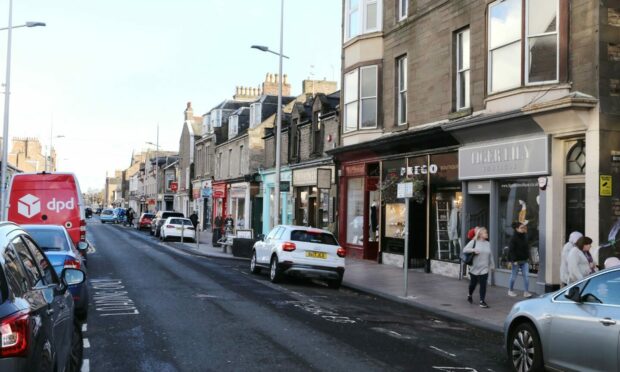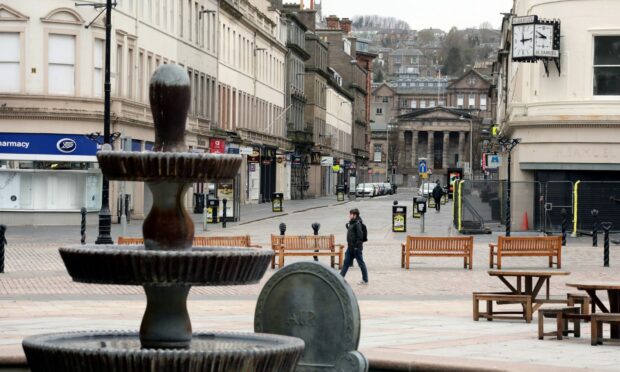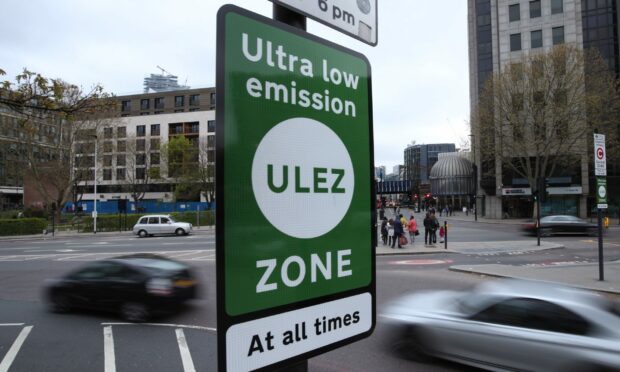Do you like the idea of living in an area where shops, public transport links and all the other vital services you use are just a stone’s throw away?
If so, the SNP’s proposals to make communities across cities such as Dundee “20-minute neighbourhoods” may appeal to you.
But in a country where roads have long been designed around car users and finances are overstretched, the government won’t find it easy to transform how we live.
One Dundee expert, though, reckons if you want to see the perfect example of an existing 20-minute neighbourhood, you don’t have to look any further than Broughty Ferry.
What are 20-minute neighbourhoods (or 15-minute cities) and how do they work?
The main principle underpinning 20-minute neighbourhoods is ensuring residents in built-up areas can live near public places they visit regularly.
That means families should be able to walk their children to school, do their shopping, visit their GP, and even go for a nice meal without having to travel long distances.
If you think that sounds familiar or even describes how you live right now, that’s because the idea itself isn’t particularly new.
In many ways, 20-minute neighbourhoods hark back to older methods of planning how cities and towns were designed.
Elsewhere, you might have heard of 15-minute cities, which is essentially the same concept with a different tagline.
What are the benefits?
A 20-minute neighbourhood is intended to make life easier for locals by ensuring they have easy access to key services.
Supporters say there are health benefits since residents are encouraged to walk and cycle.
Dundee SNP Councillor Steven Rome told us there are economic advantages when residents spend more money locally.
He told us: “When you’ve got 20-minute neighbourhoods, spending tends to be higher.
“Individual purchases will be lower, but because people tend to make the same purchases again and again, the benefit to local communities is higher.
“Businesses overestimate how much travel is done by car.”
Dr Husam Al Waer, an urban planning expert at Dundee University, cited Broughty Ferry as the poster child locally.
He said: “It’s one of the best examples in the UK. Everything’s accessible.
“One thing I like about Broughty Ferry is its diversity in terms of facilities and services.
“It is very well-connected. It promotes walkability and public transport. It has its own local economy.”
Euan Leitch works for SURF, a community regeneration group which aims to help residents in disadvantaged areas.
For him, good public transport lies at the heart of making 20-minute neighbourhoods work.
He said: “Transport is key, whether or not it’s through an improved rail network, or buses. An improved bus system would be fundamental.”
Are 15-minute cities actually viable?
Revamping local communities to fit the 20-minute neighbourhood model is a tough task which requires lots of cash.
Road users would have to adjust to being given less priority.
Right now we are in the midst of a housing crisis, but experts warn cities need dense populations for the initiative to work.
And even if the policy ends up being a resounding success, it may take decades before we see positive results.
“Most neighbourhoods are based around motor vehicles,” said planning expert Dr Al Waer. “Retrofitting them to support active travel is going to be challenging.”
He added: “It’s not an easy option in political terms. Implementing it will require investment.
“But politicians have to accept that this may require up to 25 years. Incremental change is key.”
The cost-of-living crisis has squeezed local authority budgets and Scotland’s councils have endured real-terms funding cuts.
In cities like Dundee, it’s disadvantaged economic areas which need the most help if they want to emulate Broughty Ferry.
Mr Leitch said: “The current economic climate is a challenge. We need to ensure this is not only successful for the well-off.”
Why have 20-minute neighbourhoods become controversial?
What might sound like a rather harmless policy idea has developed into a source for bizarre conspiracy theories.
Fringe critics warn residents will be prevented from leaving their local areas and claim the concept is being introduced to phase out car usage.
English Tory MP Nick Fletcher even claimed 15-minute cities would “take away personal freedoms” while speaking in Westminster.
The initiative has become closely linked with “low traffic neighbourhoods” aimed at reducing car usage and “low emission zones” which ban older vehicles from busier areas.
Low emission zones have become controversial since drivers have been forced to replace their old cars to comply with the rules.
Last year we reported a Dundee waste removal boss had to fork out £60,000 since his two vans failed to meet the requirements.
But experts say the conspiracy theories surrounding 20-minute neighbourhoods are baseless.
Mr Leitch told us: “Currently I can’t think of a topic that doesn’t have a conspiracy theory related to it.
“The fact this has a conspiracy related to is part of the zeitgeist of the 21st Century.
“There is nothing about this that would apply any form of restriction of movement.”





Conversation